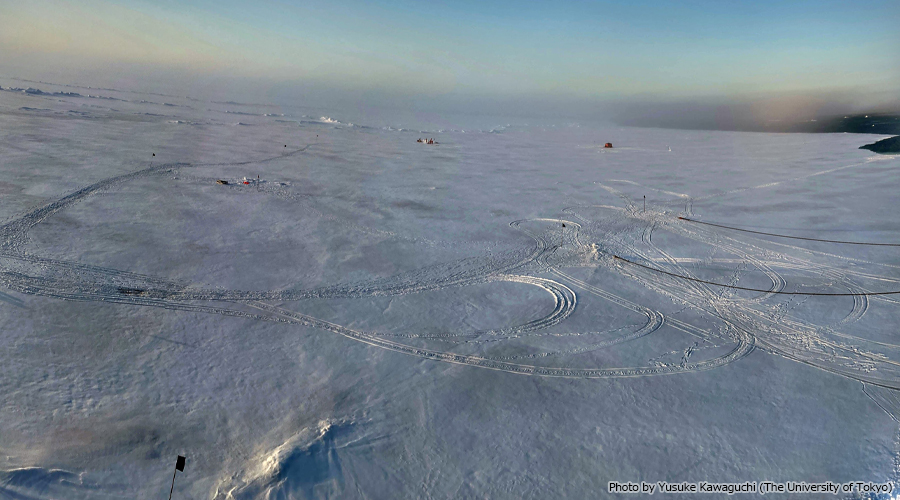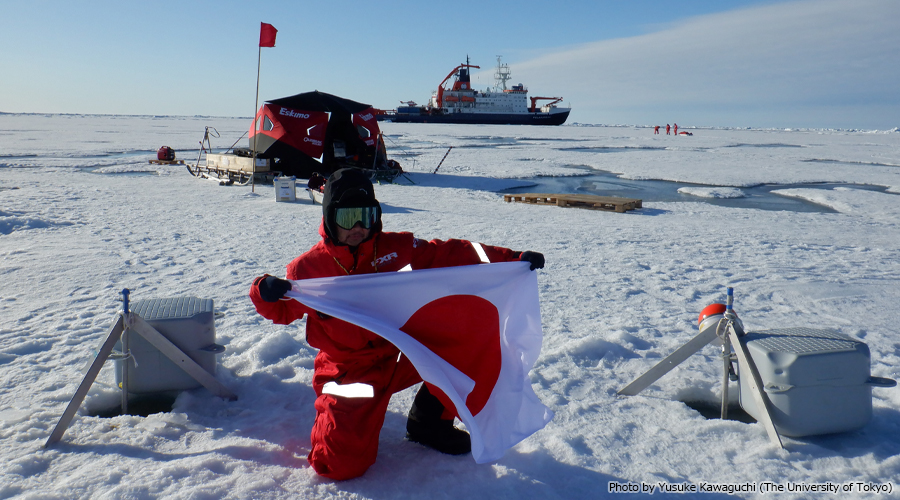Observations of Sea Ice and Ocean in the Central Arctic Ocean using Icebreaking vessel, RV Polarstern
Yusuke Kawaguchi (The University of Tokyo)
Related Research Program: Ocean
Currently, the comprehensive observations in the pack ice regions of the Arctic Ocean are underway, named ‘ArcWatch’ project and organized by the Alfred Wegener Institute (AWI) of Germany. In the ArcWatch, we use an icebreaking research vessel “Polarstern” to travel across the Nansen and the Amundsen Basins, located in the central Arctic Ocean, to conduct multifarious investigations of climate, sea ice and water. By utilizing the icebreaker, we can directly approach ice floes, occasionally with a helicopter, so researchers stand on the ice floe to implement their observations in the natural environments of the Arctic. Within the physical oceanographic team that I (Dr. Yusuke Kawaguchi) belong to, our focus is primarily on measuring water temperature, salinity, and current velocities underwater. We investigate changes in the marine environment of the Arctic Ocean from a physical perspective. At the deepest points, we lower observational equipment, called CTD, to depths exceeding 3500 meters to collect the data and samples. Additionally, a team specialized for sea-ice physics conducts observations using an underwater remotely operated vehicle (ROV), capturing detailed images of the ice’s bottom shape and natures.

Due to the constant threat of polar bears on the sea ice, strict protocols are established, including group activities and the carrying of rifles for safety. As for life aboard the ship, amenities such as a fitness gym, sauna, and pool are provided to refresh the minds and bodies of researchers, technicians, and ship crew members.

